90 years of the Olympus company - Olympus F.Zuiko Auto-S 50 mm f/1.8 versus Olympus ZD 50 mm f/2.0 Macro
3. Build quality
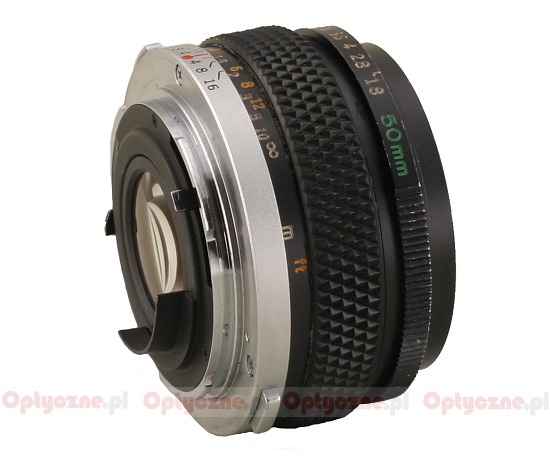 |
As we mentioned earlier, the lens starts with a metal bayonet mount. Immediately after that we find a chromium-plated ring with depth of field markings and aperture closing buttons, which are also used to disconnect the lens from the camera body. Then, we have a manual focus ring, which is relatively big because it takes more or less half of the total space on the lens. As we mentioned before, the majority of the ring is ribbed and rubber-coated.. Only a narrow strip with the distance scale in feet and meters was left without coating. Although the lens is over 20-year-old, the ring moves smoothly and evenly, with due resistance; it also makes move all the element system inside.
Please Support UsIf you enjoy our reviews and articles, and you want us to continue our work please, support our website by donating through PayPal. The funds are going to be used for paying our editorial team, renting servers, and equipping our testing studio; only that way we will be able to continue providing you interesting content for free. |
- - - - - - - - - - - - - - - - - - - - - - - - - - - - - - - - - - - - - - - - - - - - - - - -
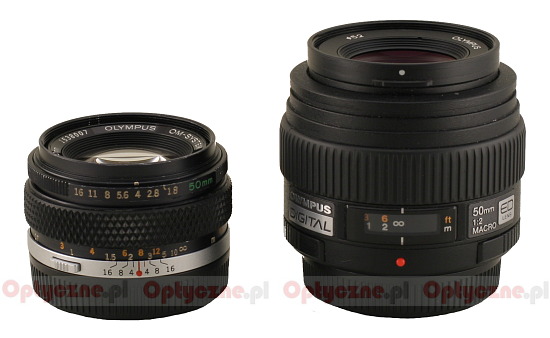 |
Further on, we will find a narrow aperture ring. Every f stop is an equivalent of1 EV and near the maximum aperture – even more, because there, immediately after f/1.8 we can go only to f/2.8. The lens ends with a non-rotating filter thread with a diameter of 49 mm (one of smaller threads in its class).
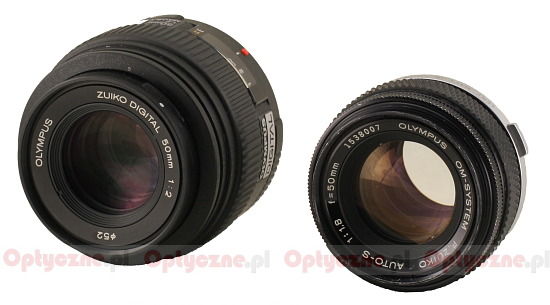 |
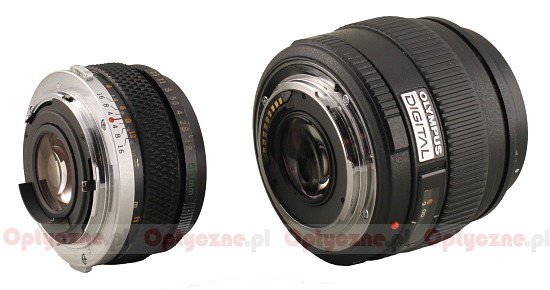 |
Most of the classic 50’s produced in the nineteen seventies and eighties were composed of 6 elements and the Olympus is not an exception to this rule. It is interesting that in different times this model contained different number of groups. At first, there were 5 of them, then - only 4. At a certain moment the lenses got the “MC” markings which meant that anti-reflective multi layered coatings were used. There are, however, lenses on the market with the same anti-reflective coatings and not marked as “MC”. Inside the lens we also find an aperture with 6 diaphragm blades.
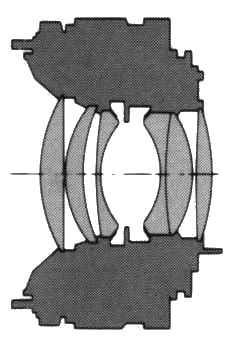
Against such a background, the new Olympus ZD 50 mm f/2.0 Macro presents itself as a complicated, big and heavy lens. We can’t forget, though, that it’s a macro lens with a far more complex design, which consists of 11 elements and 10 groups. One of the elements is made of low dispersion ED glass. We also find an aperture with 7 diaphragm blades, which can be closed down to f/22, and a non-rotating filter thread with a diameter of 52 mm.






